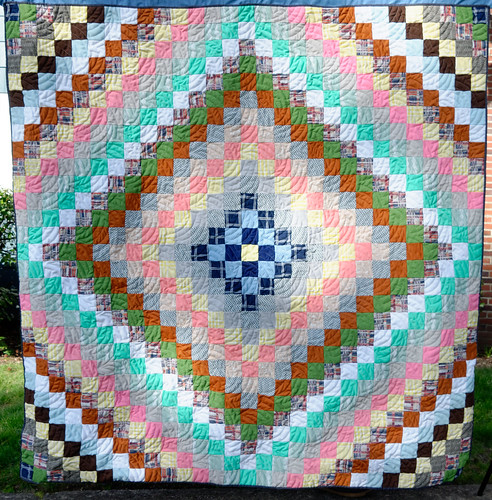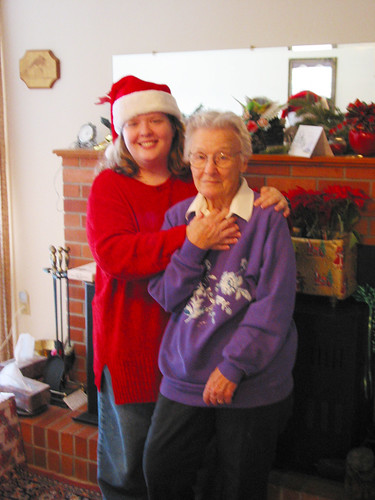Women's Work
Last summer, while staying in Arkansas for two weeks to help my mother out, we were poking through boxes in her storage building, and my mother unearthed a quilt top of my grandmother's. I didn't have to ask whose it was or where it came from; I knew the origin of the quilt top the moment I saw it.
My grandmother made quilts for all of her kids and grandkids with mill ends and scraps she brought home from her job working in a fabric company. My fallible childhood brain thinks it was specifically a fabric mill, possibly focused on upholstery or heavy-weight fabrics, but I have no way of knowing without checking with my mother. (Note to self, ask your mother tomorrow when you call her.) Having grown up in the Depression, she regarded all scrap fabric as grist for the quilting mill, and she made simple, colorful quilts—frequently with non-traditional fabric. They were hard-wearing, scrappy, great for pillow forts (n.b. my childhood) and seemingly indestructible. As soon as I saw the knits and the heavyweight fabrics, I knew it was her work.
Mom had plenty of quilts of her own and no plans to finish out this one, so I took it home with me, with a plan of routing it over to my lovely cohort Nancy for quilting on her longarm machine. Quilting a large quilt top sewn of stretchy, heavy polyesters was well beyond what I could do with my personal machine. I didn't have a person in mind for the quilt, just a determination that it would see the light of day. It's not the first, second, third, fourth, or fifth time I've finished someone else's work, and each time, I feel an obligation to honor the maker's hands by ensuring their time was well spent.
—
While binding it, I spent much time thinking about the nature of women's work. In most cases, sewing or quilting were not what a woman did for a living, but they were emphatically women's work: to be fit in after caring for family members, earning wages, growing food, raising children, and maintaining the home. This unpaid labor, though, mattered intensely when the temperatures grew cold each fall.
The phrase "it had to be done, so somebody had to do it" has been echoing in my head the past few weeks as many people (mostly women, let's be honest) sew masks for the coronavirus epidemic. It must be done, someone had to do it, and—unsurprisingly—it is women's work.
—
I asked around for possible takers for the quilt; my family is generally full up, and I wanted this quilt to matter to the recipient. I made clear in my posts that I wanted to prioritize putting this quilt in the hands of someone whose family had no tradition of quilting, and I was grateful when I realized there was, in fact, a perfect home for it - people I know up in New York, where the winters get plenty cold, and a couple of kids who get to grow up now just having one of these quilts around.
That pleases me immensely, and I like to think it would have pleased Mamaw, too. She was an eminently, perhaps even ruthlessly, practical person, and I feel confident in saying that she'd rather have her work keeping someone warm rather than sitting unfinished in a box. I think of her every time I say aloud, "This stack of fabric doesn't keep anyone warm until I finish a quilt with it!" and get back to work.
I have every reason to believe that this quilt top is the last full quilt top of hers we'll find. When I went through her fabric stash after she died, I grabbed anything and everything that looked like quilt-weight fabric or partially-finished quilt blocks, and Mom doesn't think she has any more of Mamaw's handwork stashed away. I'll eventually work up those onesie-twosie blocks into—something?—but for now, at least, her intentions were honored and this work is done at last.



